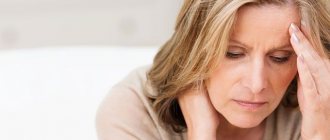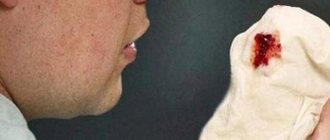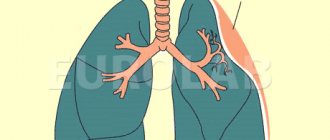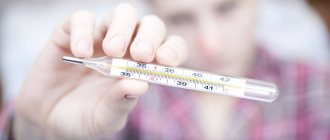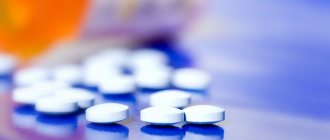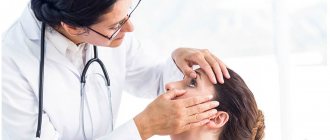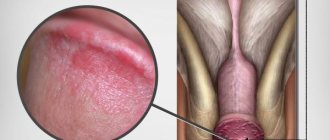Acne or blackheads is a disease of the hair follicles and sebaceous glands that usually affects teenagers, but can affect a person at any age. It leads to the appearance of boils on the skin of the face, forehead, neck, back and chest. The lesions can range from mild, painless pimples to inflamed boils or pustules filled with pus and accompanied by pain.
What is acne: general characteristics
Acne is characterized by impaired sebum production. There is a blockage of the hair follicles and sebaceous glands, which causes their inflammation. Depending on the degree of the inflammatory process, the general predisposition of the body, the decrease in defenses and the age of the patient, acne disease can manifest itself in different forms.
Under normal conditions, sebum is a natural protection: it prevents the skin from drying out, the formation of wrinkles, and protects against sun rays, wind and frost. If there is an imbalance in the body caused by endocrine disorders, problems with the gastrointestinal tract, etc., the intensity of sebum production changes. The same can be said about its composition: sebum becomes denser and more viscous, and the concentration of linoleic acid decreases. Due to this, microbes penetrate into the mouth of the hair follicle or sebaceous gland and inflammation begins.
In about a third of cases, acne goes away on its own. Another 30% of patients have enough care and medicinal cosmetics – tonics, lotions, etc. – to effectively combat acne. And another 30% of people suffering from acne, comedones and other rashes have to turn to dermatologists to select therapy.
Acne gives a person enormous psychological discomfort. Depending on the number and intensity of rashes, psychological problems can be expressed in self-doubt, feelings of melancholy, bad mood, loss of appetite, irritability and tearfulness, low self-esteem, isolation, and refusal of social activity. In turn, these psychological difficulties lead to a decrease in academic performance (if we are talking about schoolchildren and students), problems at work and in personal life. If a patient is diagnosed with stage III or IV acne, there is a real danger of developing real depression.
Varieties
Adult acne can appear even at the age of fifty and is divided into several types:
- Late acne. Occurs more often in women. They form in the chin area in the form of papules or pustules. Their appearance may be associated with the menstrual cycle, but if the rashes persist constantly, they indicate gynecological diseases;
- Inverse acne. Formations appear in the armpits, perineum, and around the navel. They look like large nodes, painful when pressed. They open on their own, which is accompanied by the release of purulent contents, sometimes mixed with blood;
- Bodybuilding acne. They arise due to the use of steroids and androgens. May indicate endocrine pathologies. Most often they are nodular cystic in nature;
- Globular acne. Appear on the body. Cysts, large comedones and nodes form a conglomerate of lesions. A sign of seborrhea of the last stage of development in men and polycystic ovary syndrome in women. After treatment, scars remain;
- Pyoderma. It usually affects women, the disease is characterized by the regular formation of inflamed nodes.
Why is acne dangerous?
But acne does not only cause psychological discomfort to a person. They can be dangerous not only for mental, but also for physical health. The consequences of exacerbations of severe and deep acne can lead to the formation of scars and scars that remain on the skin for life. This is especially dangerous if the manifestations of the rash are localized on open areas of the skin (for example, on the face), since such traces of the disease can plunge a person into deep depression and interfere with his social life.
Another potential danger is doing your own acne removal procedure at home under unsterile conditions. Squeezing out the rash can lead to further spread of the infection and infection of the deeper layers of the skin - the dermis and subcutaneous fat.
In addition, it is worth remembering the danger of infection entering the brain through the bloodstream when acne is localized on the face, neck and near the ears.
Causes of acne
Acne belongs to the category of dermatological diseases. Despite the fact that medicine has been familiar with this concept for thousands of years (mentions of it are found in ancient medical treatises), the mechanism of development of acne disease has not been fully studied. However, some of the main causes of acne include:
Hereditary predisposition.
If parents or close relatives have been diagnosed with skin rashes (pimples, acne, acne, etc.), there is a high probability that similar problems will appear in children.
Puberty period.
The transition period is characterized by a rapid surge of hormones in both boys and girls. A special place among them is occupied by androgens (in particular testosterone) - male hormones that are responsible for the production of sebum.
Hyperplasia of the sebaceous glands.
An increase in the size of the sebaceous glands leads to the formation of more sebum. As a result, the follicles can become clogged with sebum, resulting in small bumps-papules raised above the surface of the skin.
Hormonal surges
Women are more susceptible to hormonal storms than men. In addition to puberty, hormonal changes occur during pregnancy, menopause and the last week before menstruation. The period of bearing a baby is a colossal burden on the female body, and hormonal changes make this time even more difficult. In particular, the level of progesterone, which is responsible for the production of sebum, rapidly increases. This is why many pregnant women experience the development of acne and an increase in skin oiliness. As for the last week of the menstrual cycle, during this period there is a decrease in estrogen production and an increase in progesterone levels. The period of menopause, when the female reproductive system gradually declines, can also be characterized by the occurrence of acne: this is due to a decrease in the level of estrogen production. Also, hormonal acne can be caused by abortion, lactation and polycystic ovary syndrome.
Endocrine imbalances
One such disorder is adrenal hyperplasia. This condition is characterized by an increase in adrenal tissue, which disrupts the production of a number of vital hormones. In particular, the virile type of adrenal hyperplasia manifests itself in increased body hair and acne formation.
Gastrointestinal tract disorders, unbalanced diet
The appearance of the skin acts as a kind of indicator of the state of the gastrointestinal tract. If a person consumes large amounts of simple carbohydrates (sweets, sugar, baked goods), fried and spicy foods, smoked foods, alcohol and carbonated drinks, his skin may become oilier, resulting in an increased risk of acne. Some diseases (gastritis, dysbacteriosis, diseases of the gallbladder, pancreas, constipation, etc.) also manifest themselves in the form of acne and pimples. Separately, it is worth mentioning congestion in the gastrointestinal tract, in which food is not completely absorbed, which is why it ferments and rots in the intestines. This leads to the release of toxins, which then enter the blood and through it into the skin.
Stress, lack of sleep, chronic fatigue
Constant tension “wears out” the body and leads to an imbalance of the autonomic nervous system. In such cases, there may be an imbalance in the sympathetic and parasympathetic divisions of the autonomic nervous system, resulting in increased sebum production and acne formation.
Features of professional activity
If a person at work constantly comes into contact with certain chemicals and compounds (chlorine, gasoline, mineral oils and petroleum products), there is a high probability of developing hyperkeratosis and, as a result, the appearance of acne.
Taking anabolic steroids
Many bodybuilders take steroid drugs to build muscle mass. This leads to hyperandrogenism - an excess of male hormones. The bodybuilding form of acne is most often characterized by the presence of purulent inflammation, which quickly disappears after stopping the use of anabolic steroids.
Malfunctions of the immune system
If general and local immunity decreases, it becomes more difficult for the body to cope with inflammatory processes in the sebaceous ducts and the mouth of the hair follicles. As a result of the deterioration of the body's defenses, pathogenic bacteria that enter the skin successfully multiply and release their waste products. This leads to skin problems and acne.
Using inappropriate decorative and care cosmetics
Some cosmetics contain substances that clog pores. Typically these are fatty acids, emulsifiers, thickeners, fragrances, petroleum jelly, mineral oils, paraffin and silicones. If you are prone to acne, when purchasing cosmetics, choose those that are labeled “non-comedogenic.”
Hot and humid climate
High temperatures and high humidity lead to excessive sweating and increased sebum production, resulting in the appearance of blackheads and acne.
Constant mechanical impact on the skin, friction, microtrauma
Due to wearing tight collars, hats and prickly scarves, the skin in places of contact with them receives microscopic scratching injuries. Bacteria enter them, which leads to the formation of acne.
Taking medications
A number of medications (anti-epileptic, anti-tuberculosis, antidepressants) and oral contraceptives can lead to acne and pimples. This is the so-called medicinal acne.
Demodicosis
Demodicosis is a skin infection by a microscopic microorganism - the acne mite. Acne mites inhabit the skin of almost all people. Under normal conditions, these tiny microorganisms do not cause any inconvenience, and a person may not even be aware of their existence. However, in some cases, acne can cause severe allergic reactions, manifested in the form of acne. This usually occurs in cases of weakened immunity, severe stress and metabolic disorders. Mites live in the sebaceous glands and hair follicles, feeding on human sebum. Their waste products, when they come into contact with excessively oily skin, cause irritation, acne and acne.
Improper skin care
Failure to comply with hygiene rules, as well as washing too often, can lead to microbes entering the follicles, which causes acne. Also, the cause of acne can be a violation of the protective layer and acid-base balance of the skin due to excessive drying of the skin from frequent washing.
Zinc deficiency
A lack of zinc in the body leads to an increase in the amount of sebum secreted. In turn, this causes hyperactivity of the sebaceous glands and the appearance of acne.
Diagnostics
To differentiate acne, the doctor only needs to conduct an external examination of the problem area. But to identify the root cause of the rash, it is necessary to undergo laboratory testing of blood (clinical, biochemical, to determine hormone levels) and urine. Other types of diagnostics depend on the suspected cause of deterioration of the skin condition. It is necessary to assess the condition of the digestive and reproductive system.
Informative types of diagnostics: ultrasound, colonoscopy, FGDS, hysteroscopy. From the survey, the doctor learns about the factors that preceded the appearance of acne, and clarifies eating habits and the nature of the diet. If an allergy is suspected, the patient undergoes skin tests, which quickly reveal intolerance to specific irritants (cosmetics, food, perfume, dust, wool). If a relationship between acne and helminthiasis is suspected, the patient needs to have stool tested for the presence of parasites and undergo scraping from the perianal fold.
Forms of acne manifestation
Oily skin and pores clogged with sebum are the main symptoms of acne. In addition to them, several other manifestations of this disease can be identified. These include:
Non-inflammatory forms of acne
When sebum is not able to flow freely from the pores, it remains in them, thickens and darkens under the influence of oxygen. As a result, blackheads – open comedones – form on the surface of the skin. In some cases, when sebum is not produced and drained properly, oil accumulates in the lower parts of the pores. Due to this, a fatty ball is formed under the skin, which does not have access to the surface of the epidermis - these are the so-called whiteheads or wen.
Inflammatory forms of acne
When bacteria enter the cavity of the sebaceous duct or hair follicle, an inflammatory process begins. It appears as the formation of a small elevation above the surface of the skin, ranging in color from pale pink to bright red. The diameter of the compaction ranges from 1-2 mm to 1 cm, while nearby tissues become inflamed, painful to the touch, and in some cases hot. Inside there is a cavity with purulent contents. If the inflammatory process during acne begins not on the surface of the epidermis, but in the deep layers of the skin, nodular cystic acne may appear: spots and scars appear on the skin after acne of this type in some cases. It is also worth noting another type of inflammatory form of acne – acne fulminans. They are characterized by rapid appearance, severe suppuration, general intoxication of the body with an increase in body temperature to 38 degrees.
Severity
Individual manifestations of inflammation on the skin are not considered a disease. However, when painful rashes appear frequently, they speak of dermatological pathology.
The disease is divided into several stages:
- Stage 1 - the most common mild form, single comedones are not inflamed, the condition does not cause discomfort;
- Stage 2 - signs are moderate, up to 20 papules (pimples) are allowed along with a scattering of comedones;
- Stage 3 - severe course of the disease, more than 40 inflamed pimples in one area, many comedones, which can cover almost the entire skin;
- Stage 4 is the most severe, characterized by the fusion of inflammatory papules and pustules, the entire skin looks inflamed.
You should consult a doctor already at the second stage of the disease to prevent further progression. With timely treatment, recovery occurs in 2-3 weeks, leaving no scars.
Types of acne
Newborn acne
Some babies are born with closed comedones or acquire them in the first days of life. This is due to the entry of sex hormones into their blood from the mother’s body. Typically, newborn acne does not require special treatment: the disease goes away on its own within a couple of weeks.
Juvenile acne
The second name for this type of acne is acne vulgaris. The disease begins during hormonal changes in the body, and under normal conditions lasts until approximately 16 years in girls and 18-20 in boys.
Adult acne
In some cases, juvenile acne does not go away with normalization of hormonal levels, and remains with the patient until old age. Interestingly, the adult form of acne can be observed even if the patient did not suffer from rashes and comedones during adolescence.
Systemic retinoids (isotretinoin) –
Isotretinoin (preparations Roaccutane, Acnecutane) is a retinoid for systemic use in the form of capsules that must be taken orally.
These drugs have revolutionized the treatment of forms of acne that are resistant to treatment with topical medications. However, the use of systemic retinoids is only allowed in certain cases. Firstly, for severe papulopustular acne, as well as for nodular acne - in cases where the treatment regimen with an oral antibiotic was not sufficiently effective. Secondly, in patients with gram-negative folliculitis, which often occurs in patients with acne (against the background of frequent/long courses of antibiotic therapy). A course of treatment with isotretinoin in the vast majority of patients leads to complete remission of the disease, the duration of which can be from six months to 2 years. But due to serious side effects, this drug is not a good choice for mild forms of acne.
Side effects mimic chronic hypervitaminosis of vitamin A (the severity of side effects directly depends on the prescribed dosage). Cheilitis, dry mucous membranes and skin are usually observed, in addition, dermatitis and thinning of hair can be observed in 50% of cases. From the eyes - conjunctivitis, xerophthalmia, night blindness, keratitis (corneal clouding) and optic neuritis, as well as a large number of other side effects. In most cases, they can still be minimized by the correct selection of patients for this treatment method, as well as the correct dosage.
Fighting acne: how to cure and prevent relapses?
To combat acne, you should use an integrated approach: normalize hormonal levels, eat right and solve long-standing problems with the digestive tract, establish a work and rest schedule, spend more time in the fresh air, consume enough vitamins and essential microelements. It is important not only to eliminate the external manifestations of acne, but also to act from the inside.
When starting acne treatment, you need to understand that this process will take a lot of time. To choose the right strategy for solving the problem, you will have to visit a cosmetologist, dermatologist, endocrinologist and, possibly, other specialists.
Below we will look at two types of anti-acne medications - medications and traditional medicine recipes.
Acne treatment products
To select the optimal form and dose of the drug, it is necessary to correctly assess the severity of acne.
- I degree is characterized by small comedonal rashes,
- II – presence of papulopustular rash,
- III – nodular shape,
- IV – large nodes with pus.
Effective treatment of acne and acne necessarily includes the use of local remedies - ointments, creams, gels, lotions, tonics. Let's take a closer look at the features of each type of funds.
Anti-acne ointments
Anti-acne ointments are distinguished by a dense and viscous consistency, with a large amount of oils and fats. The main difference between ointments and other external products is the maximum depth of penetration of the active ingredients deep into the skin. However, it must be borne in mind that ointments are fat-based, so unreasonable use of such products can lead to additional clogging of the follicles with fat. For this reason, only a specialist should prescribe ointments for the treatment of acne.
For this reason, only a specialist should prescribe ointments for the treatment of acne.
Acne cream
Acne creams and gels differ from ointments in that they are water-based. Gels do not contain oils at all, while creams still contain a certain amount of components. These products are absorbed much faster than ointments and do not leave a greasy or sticky film.
To combat acne, you can use La-Cri cream gel with a mattifying effect. Betaine in the product prevents dehydration of the skin (epithelium), and boron nitrite helps to give a matte and radiant effect, maintaining a healthy glow of the skin. ALPAFLOR ALP-SEBUM complex (alpine fireweed extract) controls the functioning of the sebaceous glands and reduces skin oiliness, has anti-inflammatory and anti-allergenic effects, relieves redness and irritation.
Anti-acne lotions
Lotions and tonics are liquid compounds containing water, alcohol, herbal extracts and other active ingredients. The main advantage of lotions and tonics is drying out rashes.
Composition of anti-acne products
The products most often prescribed for the treatment of acne are based on the following components:
- Zinc, hyaluronate and zinc acetate. Ointments, creams and gels based on zinc and zinc acetate produce a drying and anti-inflammatory effect, preventing bacteria from adapting to the action of antibiotics.
- Sulfur. Products containing sulfur dry out acne and have an exfoliating and anti-inflammatory effect. The only disadvantage of sulfur-based products is the characteristic smell.
- Salicylic acid. Anti-acne preparations made on the basis of salicylic acid are characterized by an exfoliating and drying effect, softening comedone plugs. When using them, you need to remember that salicylic acid dries the skin very much, so you should not combine salicylic products with alcohol-based lotions.
- Erythromycin and other antibiotics. The action of antibiotics is aimed at combating gram-negative and gram-positive microorganisms that provoke the inflammatory process and the formation of acne.
- Azelaic acid. This component is included in many creams and gels, while it is practically not used in ointments. It is characterized by a pronounced antimicrobial effect.
- Retinol. Vitamin A and its analogues (adapalenes, tazarotenes, isotretinoins, tretinoins) are considered one of the most effective remedies for the treatment of acne and other skin diseases. Vitamin A deficiency leads to many dermatological disorders, so the use of retinol-based products is prescribed for the treatment of acne very often. They reduce inflammation and improve conditions for the free outflow of fat from the glands.
- Plant extracts. Extracts from plants that have a beneficial effect on the condition of the skin and cleanse it from acne include extracts of arnica, chamomile, green tea, string, calendula, licorice, violet, aloe, tea tree, etc. All of them can be included in anti-acne products .
In addition to external remedies, a course of tablets may be prescribed. Usually these are antibiotics, retinoids, hormonal drugs, vitamins. The doctor may also recommend taking a course of enterosorbents (activated carbon, sorbex, enterosgel): these products help remove toxins from the body and quickly cleanse the skin of acne.
Effective methods to combat acne
Light therapy (phototherapy) against acne
Treatment of rashes occurs with the help of special lamps, the light of which is directed at the foci of inflammation. Under the influence of light, bacterial waste products do not have a negative effect on the skin. The course of treatment usually consists of 8-10 procedures (depending on the number, depth and degree of neglect of acne).
Mechanical facial cleansing for acne
Pimples, blackheads and comedones can only be squeezed out under sterile conditions. Doing this at home is extremely undesirable, since if cleansing is done incorrectly, you can introduce an infection into the deeper layers of the skin. For mechanical cleaning, it is recommended to contact a professional cosmetologist. He will remove acne using special sterile instruments - a needle or a loop.
Chemical peels for acne
The composition of the products used for peeling includes acids - fruit, mandelic, glycolic, etc. During such cleansing, comedone plugs are softened, dead cells are exfoliated, the oiliness of the skin is reduced, and the outflow of sebum from the glands is improved.
Ultrasonic peeling
The procedure involves exposing the skin to high-frequency sound waves. Due to ultrasound, comedone plugs soften, and the doctor is able to remove the acne contents.
Skin cleansing using galvanic current
Minimal discharges of galvanic current allow you to soften the top of the eel for further removal of its contents. In addition to removing inflammation, galvanic cleansing improves the functioning of the sebaceous glands, normalizes the color and elasticity of the skin.
Which doctor should I contact?
If acne appears, you should consult a dermatologist. He will conduct an examination to exclude the development of demodicosis, take scrapings from the tumors, and draw up a treatment plan, including nutritional correction.
The type of doctor who will carry out the treatment depends on the root cause of acne:
- If acne is a consequence of diseases of the digestive system, you need to consult a gastroenterologist to eliminate the root cause of acne.
- When acne is the result of pathologies of the reproductive system, you need to visit a gynecologist-endocrinologist: to stop the inflammation that caused the deterioration of the skin.
- If the rash is a consequence of stress, you should consult a neurologist and get recommendations on taking sedative (calming) medications.
- When the formation of acne on the face and body is caused by the development of helminthiasis, treatment is prescribed by an infectious disease doctor.
In other cases, the patient is treated by a dermatologist. The specialist prescribes treatment: it is aimed at eliminating the skin manifestations of the main pathology - the root cause of acne. The option of alternately contacting a dermatologist and a specialized doctor is not excluded: gastroenterologist, gynecologist, allergist.
Choose a specialist and make an appointment with a dermatologist online
Help from traditional medicine
Traditional medicine offers many ways to treat this skin disease. Acne symptoms (especially in the initial stages) can be reduced with the help of natural masks, alcohol tinctures, applications and lotions, and plant juices.
Tea tree oil
Tea tree oil is often used to treat acne and skin damage.
To do this, apply 2 drops of oil to a cotton swab and apply to the inflammation. Attention: Never use tea tree oil internally!
Remember:
If you leave the oil in the open air, it will oxidize and lose its healing properties, and can also cause allergies!
Jojoba oil for acne treatment
Apply 5-6 drops of jojoba oil to a cotton swab and apply to the problem area of the skin. The peculiarity of the oil is its similarity in composition to human sebum, so its use does not clog pores.
The main thing to remember when treating acne, blackheads and acne using traditional recipes is the possibility of allergic reactions to the components of the products. Therefore, before starting therapy, it is recommended to consult a dermatologist and conduct an allergy test.
List of sources
- Adaskevich V.P. Acne vulgar and pink. M.: Medical book, N. Novgorod: NGMA Publishing House; 2003;
- Mayorova A.V., Shapovalov V.S., Akhtyamov S.N. Acne in the practice of a dermatocosmetologist. M.: “Firm Kavel”, 2005;
- Wolfe K., Johnson R., Surmond D. Dermatology according to Thomas Fitzpatrick. Atlas-directory. Second Russian edition. M.: Praktika 2007;
- Samtsov A.V. Acne and acneiform dermatoses. M., 2009.
- Adaskevich V.P. Diagnostic indices in dermatology. Moscow: Medical book; 2004;
How to get rid of acne using La-Cri products?
To speed up the healing process, we recommend that you supplement your acne treatment with the use of La-Cri skincare products. They are based on a balanced complex of specially selected components - Alpaflor Alp-Sebium, as well as natural plant extracts. The absence of hormones, parabens, fragrances and dyes allows the use of La-Cri products for children over 10 years old. Regular use of our products helps regulate the functioning of the sebaceous glands, reduces oily skin, and prevents the occurrence of inflammatory processes.
Depending on the degree of manifestation of the disease, you can choose the form of La-Cri products that suits you. This can be a foam for washing, a toner, a mattifying cream-gel for basic care or a cream-gel for local action.
Clinical researches
The La-Cree STOP ACNE line is distinguished by its clinically proven effectiveness. Local action cream-gel contains the ALPAFLOR ALP-SEBUM complex (alpine fireweed extract), which controls the functioning of the sebaceous glands and reduces skin oiliness, has an anti-inflammatory and anti-allergenic effect.
- Salicylic acid in the product has a drying, antibacterial effect. It penetrates deep into the skin and causes blood flow to the site of application, due to which tissue is renewed and post-acne spots disappear.
- Licorice extract has anti-allergic and anti-inflammatory effects
- Bisabolol has a calming effect. It is well absorbed into the skin and promotes the penetration of other components of the product.
A number of La-Cri products were developed jointly with Professor Denis Vladimirovich Zaslavsky, chief specialist in dermatovenereology and cosmetology of the Ministry of Health of the Russian Federation in the Northwestern Federal District of the Russian Federation.
Consumer Reviews
Yulia Kremleva about La-Cree STOP ACNE tonic (irecommend.ru)
For a long time I could not find a normal toner for my face. I often came across ones that left a sticky film on my face and I wanted to wash my face quickly. In addition, my skin is problematic, oily and therefore requires careful cleansing. Once at the pharmacy I saw a tonic from La Cree. I am already familiar with the series of cosmetics from this company; in general, I like their cosmetics. I decided to experiment and buy their tonic. The tonic is not simple, but Stop Acne. On the packaging it was written that it regulates the functioning of the sebaceous glands, reduces pores, and deeply cleanses the skin. I can say that after a week of using the tonic, the blackheads on my nose disappeared, the pores on the wings of my nose became smaller, and in general my skin somehow became fresher, clearer and began to look much better. This toner is simply magical. The feeling on the skin after using the toner is very pleasant. There is no stickiness! All cosmetics and dirt remain on the cotton pad. It turns out that a regular washing gel does not completely cleanse the skin. I plan to go to the pharmacy and buy La-Cri foam from this series.
Advantages - does not dry out - perfectly cleanses the skin - pleasant aroma - herbal composition
katerinaMa (otzovik.com)
I would like to write a review about the Vertex facial wash. It's called La-Cri STOP ACNE cleansing foam. I bought it for my daughter, but in the end we use it together). My daughter often had pimples on her forehead and chin. And the pimples turned into ulcers, which then took a long time to go away. When she started washing her face with this foam, the acne became several times smaller. It thoroughly cleanses the skin and relieves inflammation. My daughter and I also lost black spots on our nose and chin. Having such strong cleansing properties, the foam does not dry out the skin at all. The foam contains plant components with the ALPAFLOR ALP-SEBUM Complex complex, which regulates the functioning of the sebaceous glands. We wash our face with it twice a day - morning and evening. Both are delighted, especially my daughter)). She also wants to buy a tonic from the same manufacturer.
ADVANTAGES:
convenient dispenser, foams well, effectively, cleanses blackheads
FLAWS:
No
Sources:
- Ratner Desiri, Avram M.R., Avram M.M., Procedures in Dermatology. Clinical cosmetology, GEOTAR-Media, 2019
- Sukolin Gennady Ivanovich, Clinical dermatology. A short guide to the diagnosis and treatment of dermatoses, Notabene, 2017
- Reken Martin, Schaller Martin, Sattler Elke, Burgdorf Walter, Atlas of Dermatology, MEDpress-inform, 2021.
- M. Yu. Anisimova, Acne (Acne vulgaris) from the perspective of evidence-based medicine, Journal of Reproductive Health, 2010.
- N.V. Volkova, L.K. Glazkova, Psychosomatic aspects of acne, Russian Journal of Skin and Venereal Diseases.
- Gorlanov I.A., Zaslavsky D.V., Milyavskaya I.R., Leina L.M., Olovyannikov O.V., Kulikova S.Yu., Pediatric dermatovenereology, 2012.
Photos acne
Prevention
Keeping your skin clean and removing excess oil is the most important step in preventing and treating acne. The affected areas should be treated 2 times a day with mild soap or cosmetics. The skin should not be rubbed as this may irritate the thinner outer layers, leading to inflammation.
There are creams, lotions and ointments that can be used for acne to relieve symptoms. Since this is not a curable condition, they are likely to return. Acne affecting the chest and back may need to be treated with antibiotics and stronger creams.
